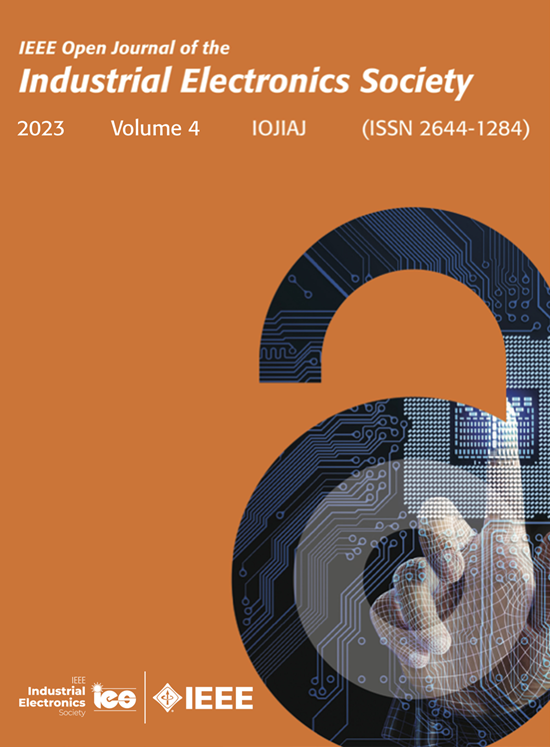EV Hybrid Battery With Integrated Multilevel Neutral-Point-Clamped Interfacing and Lossless Intermodule State-of-Charge Balancing
IF 4.3
Q1 ENGINEERING, ELECTRICAL & ELECTRONIC
IEEE Open Journal of the Industrial Electronics Society
Pub Date : 2025-01-03
DOI:10.1109/OJIES.2024.3525262
引用次数: 0
Abstract
The battery is at the heart of the electric vehicle and determines many of its key performance features. Therefore, an optimized design of the battery is critical. On the one hand, the design of batteries based on a single battery cell leads in many cases to oversized batteries in terms of energy or power, due to the diversity of requirements of the different electric vehicles. On the other hand, the use of a custom cell for each vehicle, optimized for its particular requirements, is not economically viable. Instead, hybrid batteries, combining only two battery cell chemistries, with distinct particular strengths, such as high specific energy or high specific power, offer an opportunity to cover a wide range of vehicle battery specifications while avoiding oversizing and dispersion in the cells to be employed. This work introduces a novel hybrid battery configuration, where the interfacing between the two sets of cells is accomplished through a bidirectional multilevel neutral-point-clamped dc–dc converter. The novel topology is presented, and a suitable power converter modulation and control strategy is developed. The feasibility and benefits of such configuration are demonstrated and illustrated. Particularly, the proposed battery system allows the balancing of the State-of-Charge (SoC) of the battery modules within both the sets of battery banks, which is achieved without introducing additional power losses. The SoC balancing is simply accomplished through the regulation of the power to be extracted/delivered from/to each battery module by the power converter during regular battery discharging and charging operations. The converter features enough regulation margin to correct substantial SoC imbalances. Overall, the proposed approach enables a modular and scalable design of the energy storage system for a wide range of electric vehicles, from only two different standard battery modules and a standard power semiconductor device, while optimizing the battery size for any given battery power and energy specification. Simulation and experimental results are provided in the case of a three-level internal battery interfacing to verify the good performance of the proposed novel hybrid battery configuration, modulation, and control.集成多级中性点箝位接口和模块间无损充电平衡的电动汽车混合动力电池
电池是电动汽车的核心,决定了它的许多关键性能特征。因此,电池的优化设计至关重要。一方面,由于不同电动汽车的需求不同,基于单个电池单元的电池设计在许多情况下导致能量或功率过大的电池。另一方面,为每辆车使用定制电池,根据其特定要求进行优化,在经济上是不可行的。相反,混合电池仅结合两种电池化学成分,具有独特的优势,如高比能量或高比功率,提供了一个机会,以覆盖广泛的汽车电池规格,同时避免了电池的过大和分散。这项工作介绍了一种新的混合电池配置,其中两组电池之间的接口通过双向多电平中性点箝位dc-dc转换器完成。提出了一种新的拓扑结构,并提出了一种合适的功率变换器调制和控制策略。论证和说明了这种结构的可行性和效益。特别是,所提出的电池系统允许在两组电池组中平衡电池模块的充电状态(SoC),这在不引入额外功率损失的情况下实现。SoC平衡简单地通过调节功率转换器在常规电池放电和充电操作期间从每个电池模块提取/传递/到每个电池模块的功率来实现。转换器具有足够的调节余量来纠正大量的SoC不平衡。总的来说,所提出的方法可以为各种电动汽车实现模块化和可扩展的储能系统设计,从只有两个不同的标准电池模块和一个标准功率半导体器件,同时优化任何给定电池功率和能量规格的电池尺寸。仿真和实验结果验证了所提出的新型混合动力电池结构、调制和控制的良好性能。
本文章由计算机程序翻译,如有差异,请以英文原文为准。
求助全文
约1分钟内获得全文
求助全文
来源期刊

IEEE Open Journal of the Industrial Electronics Society
ENGINEERING, ELECTRICAL & ELECTRONIC-
CiteScore
10.80
自引率
2.40%
发文量
33
审稿时长
12 weeks
期刊介绍:
The IEEE Open Journal of the Industrial Electronics Society is dedicated to advancing information-intensive, knowledge-based automation, and digitalization, aiming to enhance various industrial and infrastructural ecosystems including energy, mobility, health, and home/building infrastructure. Encompassing a range of techniques leveraging data and information acquisition, analysis, manipulation, and distribution, the journal strives to achieve greater flexibility, efficiency, effectiveness, reliability, and security within digitalized and networked environments.
Our scope provides a platform for discourse and dissemination of the latest developments in numerous research and innovation areas. These include electrical components and systems, smart grids, industrial cyber-physical systems, motion control, robotics and mechatronics, sensors and actuators, factory and building communication and automation, industrial digitalization, flexible and reconfigurable manufacturing, assistant systems, industrial applications of artificial intelligence and data science, as well as the implementation of machine learning, artificial neural networks, and fuzzy logic. Additionally, we explore human factors in digitalized and networked ecosystems. Join us in exploring and shaping the future of industrial electronics and digitalization.
 求助内容:
求助内容: 应助结果提醒方式:
应助结果提醒方式:


